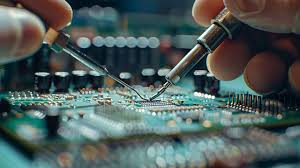

The plan was presented during the council’s second meeting, underscoring the importance of building a skilled Filipino workforce to sustain industry growth.
School-to-industry pipeline
Central to the discussions was the creation of a school-to-industry pipeline through stronger collaboration among the Department of Education (DepEd), Commission on Higher Education (CHED), Technical Education and Skills Development Authority (TESDA), and industry stakeholders.
The council proposed flexible learning pathways, such as ladderized programs and micro-credentials, to help Filipinos acquire high-value technical skills aligned with global industry standards.
Chairing the meeting on behalf of Secretary Frederick D. Go, OSAPIEA Undersecretary Angel Ignacio stressed that talent development is critical to long-term success.
“Investing in our people is the most critical component of building a resilient and globally competitive semiconductor industry,” Ignacio said.
Strengthening investment climate
Beyond workforce development, SEIAC also tackled strategies to improve the country’s investment environment. Initiatives include building world-class Strategic Economic Zones and conducting an infrastructure audit to address gaps in power, water, and logistics. A pilot project at New Clark City will serve as a model for expansion nationwide.
The council also reviewed measures to streamline regulations, boost ease of doing business, and promote the Philippines in the global market.
Global positioning
As part of its international push, SEIAC is preparing to lead the country’s participation in SEMICON Europa 2025, the premier European platform for semiconductor innovation. This move aims to diversify export markets and align with Europe’s demand for alternative suppliers amid global geopolitical shifts.
SEIAC said these initiatives will ensure closer alignment among government agencies and industry partners in positioning the Philippines as a competitive hub for semiconductor manufacturing and innovation. —Ed: Corrie S. Narisma